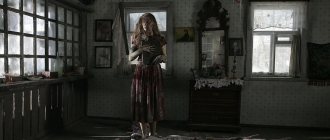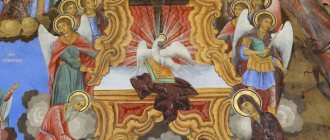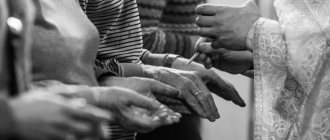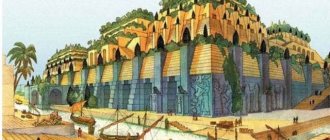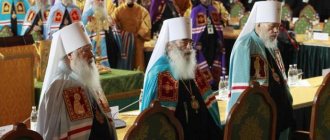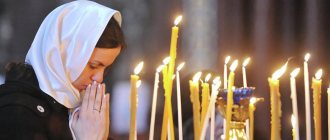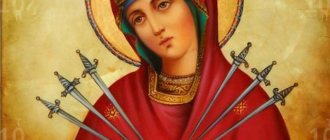In our everyday reality, miracles sometimes happen, and some of them become known to the whole world. So, in the last century, the event that happened in Kuibyshev received a great resonance. People gave it the name “Zoino standing”. Let's now try to figure it out and answer the question that worries many: is this just a beautiful and at the same time terrible legend that is still remembered, or a real fact that took place? The topic of our article: “Stone Zoya - truth or myth?”
How it all began?
By historical standards, this miraculous event happened not so long ago. It happened in the middle of the last century in Kuibyshev, now this city is called Samara.
In 1956, on a January day, in one of the houses, namely on Chkalovskaya Street, house number 84, an inexplicable phenomenon occurred. A crowd of onlookers gathered around the house, wanting to see this sign. The news quickly spread among people: for some reason the girl turned into something like a statue. Like a statue, she froze in the middle of the room, but she was alive. Everyone was eager to see this at least out of the corner of their eye, and a detachment of mounted police was on duty here for a week to suppress the unrest.
There have already been many disagreements in this story from the very beginning. So, according to one version, a simple family lived in the house: a mother and her daughter Zoya. That evening, her believing parent went to church, and her daughter had a party, to which she was expecting her fiancé named Nikolai. When the mother returned home, she saw her daughter in a petrified state and lost consciousness. First she was taken to the hospital, and after the woman came to her senses, she returned home and began to pray fervently.
According to another version, Claudia Bolonkina and her son Nikolai lived there. It was he who was Zoya's boyfriend and invited her to visit. She kept waiting for him that evening, but he never came. The rest of the story followed the same scenario.
"Zoe's Standing" Fact No. 1 “Home”.
One way or another, in all versions of the legend about Zoya, a house appears on Chkalovskaya Street No. 84. Take any source, it says everywhere - “house on Chkalovskaya Street No. 84”, “in Bolonkina’s house”. I specifically highlight these phrases so that you understand: each time we are talking about one, specific house .
The apartment is the house of Claudia Bolonkina. According to legend, “Zoya’s Standing” took place here.
But here’s the problem: at the indicated address on Chkalova Street there are several residential buildings under the same number. This is a manor consisting of apartment houses surrounded by a common fence. And Klavdia Bolonkina’s former apartment is located approximately in the middle of the “estate”.
General view of the “house” on Chkalova Street, 84
It’s simply impossible to see “Zoya’s house” from the street. Well, no way! Even if you walk up to the fence and jump, you still won’t see anything. This is what the complex of houses on Chkalova Street looks like now, and this is what it looked like in 1956.
Consequently, no old woman or group of praying old women could/could have seen the ungodly dances with the icon in winter. All they could see from Chkalovskaya Street was the facade of a two-story house and a fence.
Gate to the courtyard of the “estate” on Chkalova Street, 84
The first person in Samara who began to thoroughly investigate the history of “Zoya’s Standing” was local historian Valery Erofeev. At that time, it was still possible to find eyewitnesses to the events on Chkalovskaya. From their words, he wrote down - in January 1956, two old women actually wandered along Chkalovskaya Street. Residents of the houses redirected the ladies to different addresses. Until, finally, one of the neighbors, jokingly, pointed to Bolonkina’s house.
There is a white bag hanging in the courtyard of the estate. Someone is waiting for Santa.
The old women explained to Klavdia Bolonkina that they were looking for a green house in which there was a stone girl. Allegedly, on this score, God's grace descended on some blessed Agrafena and she prophesied. Bolonkina, of course, had never heard of any “stone girl.” The old women left, and the very next day the well-known events began.
Read more in the article by Valery Erofeev
Let's fix it. None of the “eyewitnesses” could see the “miracle” from the street, since Bolonkina’s house-apartment was located in the depths of a fenced-in yard.
Investigation by journalists
Despite the passage of decades, talk about this event does not subside. During the journalistic investigation, it was concluded that there was no miracle. But what really happened at that time? The fact that a huge crowd gathered near the house in those January days, attracted here by rapidly spreading rumors, was not refuted by anyone. But did a real miracle take place then?
The reason for this pandemonium, according to experts, was the so-called mass psychosis, fueled by certain social conditions that existed in the country at that time. During that period, the government changed, the cult of Stalin was becoming a thing of the past, and the powers that be made concessions in relation to the church and believers.
This incident was even discussed at a party conference held in the city at the end of January. A transcript has been preserved, which contained statements by the secretary of the regional committee of the CPSU. In it, he denied the reality of what happened.
One old woman said that in that house a girl was petrified, who was thus punished for blasphemy. Rumors began to spread quickly. In addition, the police, then assigned to maintain order, attracted the attention of the people even more, causing a stir. When the law enforcement agencies left there, the crowd of onlookers scattered along with them, eager to look at the “miracle.” According to eyewitnesses, only an old woman lived in that house, and there was no question of any girl.
Based on the investigation, it turns out that this was an invention of the same Bolonkina who released the false information. The documentary “Stone Zoya” tried to shed light on the reliability of the facts.
Notes
1. See data on the Kirov region in [Shabalin 2004: 99].
2. See options in the archives of the Nizhny Novgorod University: from the village. Kochetovka, Sechenovsky district, 1996 (Abashina P.I., born 1912); from the village of Norikha, Sechenovsky district (Simonova E.V., born 1931) - transcribed from the notebook of Derbeneva G.A., p. Dvoeglazovo, Tonkin district - on the cover of the notebook it is written: “1964, Krasnodar, Monument to Zoya the Great Martyr” [RRPNK 2008: 236–237].
3. Recording from the archives of the European University in St. Petersburg, EU-Khvoin-99, No. 32, DOM. See other texts in [Dobrovolskaya 1997, Shtyrkov 2012: 53–82]. In total, I found 21 versions of this story from the Arkhangelsk, Kostroma, Leningrad, Nizhny Novgorod, Novgorod, Pskov, and Tver regions. Some of them are a retelling of the letter about Zoya’s torment, other texts date events to a specific area - a village, a village.
4. Tabu: dancing in churchyard [Thompson: C 51.1.5].
5. Journalist A. Zhogolev, editor of the newspaper “Blagovest”, editor of the Internet portal of the Orthodox newspaper “Blagovest” is one of those people, thanks to whose efforts “Zoya’s Standing” became a popular story related to the miracles of St. Nicholas.
6. Previously, a documentary film “Zoya’s Standing” was shot (authors V. Osipov, D. Oderusov, Yu. Izyatsky, etc., 2000), which contains interviews with Samara residents about the events of 1956.
7. Actually, the Samara priest proposed erecting a monument on Chkalov, 84 - presumably the house where the miracle happened - back in 2004 [RRPNK 2008: 238].
8. In an interview with the rector of the temple, Priest Igor Solovyov, the name of the icon painter is also indicated: “The icon was painted by the Samara icon painter Tatyana Mikhailovna Ruchka, we consecrated the icon in August of this year. We decided to paint an icon with a miracle about Zoya, so that this miracle would not be forgotten” [Belkina 2002].
9. See the study of this plot in [Hung 2012]. In the theses, I will not dwell on the conspiracy theory, according to which the rumor about the petrified girl was started in 1956 in order to cover up the increasingly popular story about the sodomy of the Kuibyshev hieromonk Seraphim (Poloz), which discredited the local church authorities. In fact, this theory may well explain the almost simultaneous appearance and dissemination in church circles of a written text about the life of Zoe and the appearance of the name Seraphim in the letter, almost simultaneously with the rumors.
Witnesses and rumors
Three decades later, witnesses to this story began to appear, but they were not directly related to what happened. These were those who simply heard a lot about it from other people, but did not see anything with their own eyes. The legend, thus, began to become overgrown with more and more rumors and speculation. According to some, it no longer had anything to do with real events.
Fictions include information that pointed to emergency doctors who allegedly came to Zoya and tried to revive her with injections and rid her of this condition. There is also a story about police officers who saw a frozen girl and instantly turned gray from this sight. They also talked about a certain holy elder who then came to the city and communicated with the petrified girl. There is no reliable data regarding this information, and, according to some, it is all based solely on gossip. But is this really so? At the same time, the name Zoya did not appear immediately, but several decades later, and later the girl was assigned the surname Karnaukhov.
Films based on the legend
In 2015, a documentary film was shot and shown on the TVC channel - “Line of Defense. Stone Zoya." Also based on these events, the film “Miracle” was shot in 2009 by director Alexander Proshkin. Only the action of this film takes place in Grechansk, a fictional city. This picture involved individuals who were not actually present there at the time. So, Nikita Khrushchev, who at that time was the leader of the country, appeared here.
The film “Miracle,” filmed according to the script by Yuri Arabov, who showed interest in Orthodox themes, starred such famous actors as Konstantin Khabensky, Polina Kutepova and Sergei Makovetsky. Many viewers who have watched this film perceive it as a documentary, but in fact it is based only on a legend, which has not yet been confirmed and is overgrown with many fictitious circumstances.
In addition, in 2011, NTV aired a historical detective story called “A Dark Case. Stone Zoya: truth or myth?”
Perpetuating history
In 2010, at the behest of the head of the city, it was decided to erect a memorial sign in honor of the legendary Stone Zoya. It is located on that famous street. The sculptural image of St. Nicholas the Wonderworker is a kind of reminder of a long-past event, but the image of Zoe herself is not present here. However, her name is mentioned on the plaque that is on this monument. In a temple located on the outskirts of Samara, people pray for a miracle in front of the icon of St. Nicholas the Wonderworker. Along the edges are miniatures depicting footage associated with that ancient event.
This was mentioned in the film “Defense Line. Stone Zoya." In those days, people needed a miracle, because the old order had collapsed, and something new had to come to replace it. Religion began to revive, and it became a necessary confirmation of its strength. What happened struck many people, and they quickly began to turn to faith. At that time, there weren’t even enough crosses for those asking.
Medical version
In addition to the religious one, there is a medical version of this story, which was expressed in 2010 by Svetlana Kondrashova, a psychiatrist at the State Scientific Center for Social and Forensic Psychiatry named after. V. P. Serbsky. According to this version, the girl suffered from a mental illness and fell into a catatonic stupor due to its exacerbation.
Subsequently, in 2022, the former head of the department of psychiatry at Samara State Medical University, Gennady Nosachev, told a Komsomolskaya Pravda correspondent that “the story is not a legend, the girl really existed,” and added that he saw her, but “not in a moment of catatonic stupor , and later, when she was already in a psychiatric hospital,” in which she was then treated several times. According to him, in this story, “the onset of decompensation of the disease coincided with external stress.”
However, Zoya Karnaukhova’s medical record was not preserved, since there was a fire in the clinic to which she was assigned, and in the psychiatric clinic the archives have been kept for only 25 years.
House No. 84 on Chkalova Street, where, according to legend, Zoya stood, became a place of pilgrimage for Orthodox Christians.
On May 12, 2014, the house was damaged by fire.
In 2009, the diocese turned to the city authorities with a request to install a memorial sign in honor of the Samara miracle near house number 84 on Chkalova Street.
In 2012, a monument to Nicholas the Wonderworker was erected on Chkalov Street. The monument was erected in front of house 86, behind which, in the depths of the block, was the house of the Bolonkin family. As the former head of the city, Viktor Tarkhov, explained, “eight years ago a competition was held for the development of the built-up area of the city. This block, where Zoya’s house is located, became private territory already at that time... we thought for a long time about where to install the monument. And they decided to put it on public territory - the street lawn in front of Zoya’s house.”
Samara (Kuibyshev), Chkalova 84 - the house in which Zoya was “petrified”. On the right is a monument to St. Nicholas the Wonderworker.
On May 22, the day of the transfer of the relics of St. Nicholas, the monument was consecrated. Metropolitan Sergius of Samara and Syzran, having celebrated the liturgy in the Church of Peter and Paul, walked with a procession to the nearby house No. 84 on Chkalov Street. In his sermon, Metropolitan Sergius said:
Today's event - the consecration of the monument to St. Nicholas in the place where he showed his power - is a reminder that God visits every person and cares about him. A person sometimes goes so far in his madness that he cannot stop himself, and a force is needed to stop him. What happened is not God’s punishment, but God’s love for the salvation of our souls.
What does this legend say?
A certain girl named Zoya, who is also a pipe factory worker, was walking with her friends at home. They danced and had fun. Although this was not supposed to be done during the Nativity Fast. Our heroine’s mother was also against this idea. The girl had a fiancé, Nikolai, but for some reason he was delayed, and she continued to wait for him. Unable to bear it, in a fit of anger, Zoya grabbed the icon of St. Nicholas the Wonderworker and began to dance with it. The girl said the following words: “If my Nicholas is not there, then I will dance with Saint Nicholas.” Then her friends who were present at the party began to persuade her not to do that, because it was blasphemy. But in response to them she only said: “If there is a God, let him punish me!”
After this, something inexplicable happened. A whirlwind arose in the room, lightning flashed, a terrible noise arose, and... Zoya at that very moment froze, like a statue. She was completely icy and clutched the icon to her chest. Her legs seemed to have become fused with the floor, and the girl could not be moved from her place. Despite the absence of external signs of life, her heart was beating. Since then she has not eaten or drunk, but Stone Zoya continued to live.
A film about this event was repeatedly produced by directors, but these films never provided an accurate explanation. They tell how the people on duty heard a girl screaming at night: “Mom, pray! We perish in our sins!” The news of this spread throughout the city, and the phenomenon was called “Zoino’s Standing.” Priests were invited to read prayers. But the holy men could not take the icon from Zoya’s hands. On Christmas Day, Father Seraphim came to the house and said the following words: “We must wait for a sign on the Great Day.”
There is even a legend that Nicholas the Wonderworker himself appeared to Zoya. On the day of the Annunciation, a certain old man came, trying for the third time to get into the house. The attendants only heard that the old man asked Zoya if she was tired of standing like that. Then there was no trace of him, he disappeared unnoticed. Then rumors began to spread that the saint himself was then in that room.
So the girl stood for 128 days, until Easter. On the eve of the holiday, she again began to appeal to people to pray, for the whole world was perishing in sins. From that time on, Zoya began to come to life and continued to ask everyone to pray for peace. After she woke up, they began to ask her questions and ask how she survived for so many days. After all, she could neither drink nor eat while she was in a petrified state. To this she replied that she was fed by pigeons. The night guards were horrified when Zoya shouted that everyone should pray, since the earth was burning and the whole world was perishing in sins. As legend says, on the third day of Easter the girl died, forgiven by the Lord.
There is a version that after Zoya came to life, she was taken to the hospital, where she remained until the end of her days. There is also an assumption that she later lived in a monastery. Over time, Stone Zoya still lives in the memory of the people. Many people now associate Samara with that ancient event and the image of St. Nicholas the Wonderworker.
Documentary film about the miracle – “Zoya’s Standing”
Dear visitors to our Orthodox island!
We invite you to watch a documentary about the most amazing and mysterious miracle of the 20th century - “Zoya's Standing”!
The fact that the petrified girl, who stood without food, sleep or rest for 128 days, clearly speaks, or rather, shouts loudly to us that the Lord not only exists, but also punishes the arrogant blasphemers who, stepping over all the forbidden boundaries of atheism, cross into impudent blasphemy!
Zoya's standing
There is a time for everything: a time to destroy and a time to build, a time to cry and a time to laugh, a time to mourn and a time to dance, a time to scatter stones and a time to gather stones.
In one of the houses on this Chkalovskaya street in the winter of 1955-1956, an event incomprehensible to the human mind took place. A girl named Zoya began to dance with the icon of St. Nicholas the Wonderworker and became petrified. It was not just paralysis, it had grown into the floor. That is, a living human being, as it were, united with inanimate matter and became dead.
If we remember that the name Zoya is translated from Greek as “life,” then this fact becomes the most symbolic, frightening and warning. It was as if life itself had frozen and petrified.
Why did this happen in those years and in Kuibyshev? What was Zoya's standing? What is this event still called? We will try to figure this out.
This is the room. Little has changed here since those times. At least, the same stove and floor from which, according to eyewitnesses, they tried to knock Zoya out until blood began to flow from there. Everything here breathes that era. What era was this? Many people still call it the “Khrushchev Thaw” according to the common cliche. Yes, Nikita Sergeevich began to debunk Stalin’s personality cult and release people from the camps, both innocent people and the most ardent revolutionaries. “Khrushchev apartments” began to appear, ugly in appearance, but with amenities and bathrooms. And the young tribe, which was promised to live under communism, had fun.
Local resident Lyubov Kabaeva: “I have lived here since 1952. What do I remember? I know that a monk lived here. He lived here, and then he renounced the Church and cut his hair. And he sold the house to Claudia Bolonkina. She moved here with her sixteen-year-old son. And the nuns told the monk: “God will punish you for renouncing the Church.” And when Bolonkina and her son moved here, they decided to take a walk. He was a young son. And she was a “leader”, a “beer drinker”. She worked from morning to night, and he came here with friends and decided to have a party. All the young people were in couples, but one girl was without a couple, and there was no guy. And she took the icon of St. Nicholas and began to dance with it.”
Priest Vitaly Kalashnikov: “My mother’s aunt worked as an emergency doctor. And one day he comes by ambulance to their house in the morning, wakes everyone up and says: “Why are you sleeping? The whole city is not sleeping, everyone is on their feet.” They ask in surprise: “Aunt An, what happened?” She says “Zoya...” And says that she began to dance with the icon of St. Nicholas and seemed to have turned to stone. Ambulance doctors were called. They tried to somehow change her condition, they tried to give injections, but the needles bent and did not enter the body.”
Local resident Lyubov Kabaeva: “We had mounted police on the corner at that time. People began to gather and go to see what was there. A whole pandemonium."
Pensioner Anna Fedotova: “They sprayed water on everyone with a hose. I didn't want to go cold. I think: “When the policeman comes out, I’ll run after him.” And then I saw that a few minutes later a policeman came out, and I ran after him. I ran to the corner, went to another street and said: “Comrade policeman, they say that no one is standing there. And if there was no one standing, then people wouldn’t gather here. There wouldn't be anyone. And she wouldn't have been clogged. And he says: “Are you a believer?” I say: “Believer.” “I can’t tell you.” I say: “I won’t give you away.” “We are not allowed to talk. But if you don’t let me down, then I will, of course, tell you.” And he immediately takes off his cap and says: “You see what I am, and I’m 28 years old.” I say: “I see. You are gray."
The Russian Orthodox Church, a faithful custodian of traditions, again began to be declared enemy No. 1. It was Khrushchev who promised to show “the last priest” on TV. And by the year 2000, you probably won’t believe it, everyone was promised immortality, understandable through science. Believers, as under Lenin-Trotsky, were again declared crazy, imprisoned, and exiled. This is probably why the Lord showed a miracle in those years. And not just anywhere, but precisely in Kuibyshev, the reserve capital of the USSR, where a stone idol rose on the central square, where there used to be a cathedral, and still stands.
To some, the miracle of Zoya’s standing probably still seems impossible. And if possible, then incredibly distant and legendary. But people, one way or another, who came into contact with it, live nearby. The driver of our film crew said that, as a boy, he heard from a neighbor policeman how their squad was on duty in that house at night. And suddenly an old man approaches the frozen girl and takes the icon from her, which no one could do before. He goes to the exit and disappears. The policemen, having come to their senses, rushed to the door, but it turned out to be closed. When a verbal portrait of this old man was compiled, he was very reminiscent of the image of St. Nicholas the Wonderworker.
Zoya's standing - what is it? Punishment or a special form of testimony of faith? Of course, punishment. Because the girl angered the saint of God. This is a sign to those thousands who crowded at the gates and the millions who heard about the miracle. This is a warning to all of us, the orphaned and the poor, the poor and confused by propaganda, that the Lord has not abandoned us. Zoya has become petrified through sin.
And Zoya was resurrected on Easter, on Bright Sunday of Christ. And according to one version, she soon died, and according to another, she hid in one of the distant monasteries and still lives there.
Already during filming, we received, as it were, indirect confirmation of the miracle of Zoya’s standing. And it is also connected with St. Nicholas the Wonderworker. In the village of Keramik, features resembling this saint of God appeared on the door of a pharmacy under construction. We shot strange gray outlines on the iron, and on film we saw an almost obvious face with shades of color. A similar image appeared dozens of times in photographs taken during the Sacrament of Wedding in the St. Sophia Church in Samara. Although in reality this image is not on that wall.
Yes, we need to pray. The Almighty calls us to repentance both through the mouth of a simple priest and through great miracles. But we do not heed, preparing the Judgment for ourselves. “Lord, deliver me from petrified insensibility,” he asks in prayer. What if we really become petrified, and not only in our hearts, but in our whole nature. After all, this is already happening. Our land is turning into a stone desert. Entropy - say scientists. The abomination of desolation - say the righteous.
“And as it was in the days of Noah, so it will be in the days of the Son of Man: they ate, they drank, they married, they were given in marriage, until the day that Noah entered into the ark, and the flood came and destroyed them all. Just as it was in the days of Lot: they ate, they drank, they bought, they sold, they planted, they built; but on the day that Lot came out of Sodom, it rained fire and brimstone from the sky and destroyed everyone; so it will be on the day when the Son of Man appears. On that day, whoever is on the housetop and his belongings are in the house, do not go down to take them; and whoever is on the field, also do not turn back. Remember Lot’s wife.”
Gospel of Luke (17:26-32)
Video - category
Eyewitness testimony
After this event, that same priest Seraphim was asked questions about his meeting with that phenomenon. He answered them evasively, but it still became clear that it was he who was then able to take the icon from the girl, who was the stone Zoya in Samara.
But there is also testimony from a witness - pensioner Anna Fedotovna. She, like many then, wanted to see the miracle with her own eyes, but the police guarding the house did not let anyone through. Then the old woman decided to ask one of the boys if everything was really as they say. But he answered evasively, saying that they were not ordered to report anything. His gray hair, which he showed to the woman, was more eloquent than words.
There was also a witness who worked in an ambulance. Then she arrived at the house to help the girl. Having tried to inject her, she realized that it was all useless, because the needles bent and broke on the hardened skin. This woman’s name was Anna Pavlovna Kalashnikova, and she was a relative of the priest Vitaly Kalashnikov, who told about this story from her words. She, like many eyewitnesses then, gave a non-disclosure agreement. Despite this, the woman told many people about the miracle.
One day a believer came from Kuibyshev to the temple where Seraphim served. She saw him and immediately recognized him as the priest who was present at that event. In most cases, he answered questions about Zoya’s Standing evasively and did not give direct answers. From Alexandra Ivanovna’s narrative it follows that she met with Father Seraphim and asked about the whereabouts of the icon that was then in the girl’s hands. To this he just looked at her sternly and remained silent. But there is information that the icon is in the Rakitny temple. Mother Ekaterina Lucina spoke about this, but then it was kept secret, because everyone was afraid of Seraphim’s re-arrest.
Svetlana Chekulaeva’s uncle was then a participant in the feast. He told his loved ones about what had happened, and since then this story has become their family legend. As his niece says, he saw that the girl froze, stopped speaking and stood hugging the icon. Her uncle, like those who were with him at that party then, were sentenced to different terms. These facts were presented in the documentary film “Stone Zoya” (TVC).
In fiction
In 2009, the AST publishing house published a novel by Yuri Arabov, based on which he wrote the script for the film “Miracle.”
In 2010, the Ryazan Orthodox publishing house “Zerna” published Anton Zhogolev’s book “Zoya’s Standing,” where it is described as part of church tradition, which is “more reliable than any fact.”
In 2015, the publishing house of the Sretensky Monastery (Moscow) published the story “Standing” by Archpriest Nikolai Agafonov, dedicated to Zoya’s standing. The story is an artistic interpretation of eyewitness accounts with whom the author communicated a lot.
In 2022, the Siberian Blagozvonnitsa publishing house published Veronica Chernykh’s story “Icon,” which is an artistic reconstruction of Zoya’s standing, based on the words of a relative of an eyewitness and material collected on the Internet.
In 2022, poetess Elena Kamorina wrote the poetic “The Tale of Zoya the Stone and Her Terrible Standing” based on the plot of a folk tale.
However, among contemporaries and descendants there were skeptics who refuted or questioned “Zoino’s Standing”.
In the city of Kuibyshev, rumors about a supposed miracle that happened on Chkalovskaya Street are widespread. There are about twenty notes on this matter. Yes, such a miracle happened - shameful for us communists... Some old woman walked and said: young people were dancing in this house, and one woman began to dance with the icon and turned to stone. After that they began to say: she was petrified, numb, and off it went, people began to gather... They immediately set up a police post, and where the police are, there are eyes. It turned out that our police were not enough, since the people kept arriving, they sent out mounted police, and the people, if so, all went there. Some even went so far as to propose sending priests there to eliminate this shameful phenomenon. The regional committee bureau consulted and gave instructions to remove all orders and posts, remove the guards, there is nothing to guard there... But essentially this is sheer stupidity, there were no dances, no parties in this house, an old woman lives there.
- Mikhail Efremov (in 1952-1959, first secretary of the Kuibyshev Regional Committee of the CPSU).
By decision of the party conference on January 24, 1956, a feuilleton entitled “Wild Case” was published in the newspaper “Volzhskaya Kommuna”, which denied the fact of the girl’s petrification and reported that this story was invented and a rumor about her was spread by a certain woman named Agrafena.
Documentary film “Stone Zoya.
Line of Defense" (2015) According to philologist N.V. Petrov, the plot of the sacrilege dancer has been known in Russian folklore since at least the 19th century; in 1919 and 1956 it was updated in new folklore stories. “Zoino’s Standing” of 1956 turned out to be the most stable textualization of the plot, supported by a narrative scheme popular in the church environment about the miraculous punishment of blasphemers.
Petrov believes that the beginning of the creation of the plot was some event that occurred in Kuibyshev at the beginning of 1956 and caused religious unrest in the city, accompanied by the desire of the Soviet party structures to expose the standing. Probably from the middle of that year, the story of the petrified dancer began to circulate among bearers of folklore tradition - both in the Kuibyshev (now Samara) region and beyond. Subsequently, a manuscript by an unknown author, the so-called “Zoino’s Life,” appears; Petrov supposedly dates its distribution to the end of the 1950s. The contents of the manuscript “vary in places in different copies,” but Petrov Fr. Since 1960, along with written stories, oral stories have also appeared about the petrification of dancers (a girl dancing with an icon or a person dancing in a church), not all of which are tied to Kuibyshev. According to Petrov, these stories are “the implementation of the well-known narrative scheme of “punishment for sacrilege”: a person breaks a taboo, is punished, then is healed,” where the motive of punishment is specified in the form of paralysis.
Many details, according to Petrov, were added to the plot quite late and frame it, and in order to include the legend in the list of Orthodox miracles, it is ““tailored” to certain patterns.” According to Petrov, the plot is detailed only in the late 1990s, when the instructive text about Zoya’s standing moves from the category of rumors to the rank of Orthodox legend and becomes extremely popular in the Orthodox community. The story of Zoya's standing was published in many church collections along with other testimonies about the miracles of saints. Petrov notes that from the 1990s to 2000s, “Zoino Stoyanie” became a “folklore brand” of Samara, based on “real historical events.”
By the way, in a response dated January 18, 2022 to a request for information about “Zoya’s standing,” the Russian FSB Directorate for the Samara Region reported that it does not have archival materials regarding this incident.
Be that as it may, there is no smoke without fire. It is difficult to imagine that in a deeply atheistic Soviet society, where everything anti-Soviet was destroyed at the root, such loud religious rumors could appear out of nowhere, which swept the entire USSR, gave rise to many books, films, as well as other artistic and documentary echoes that lasted 66 years and have survived to this day. We should not forget that there were many witnesses and eyewitnesses to those events, both ordinary and high-ranking citizens, and the very fact of what happened created a huge number of problems for Soviet officials and intelligence services.
Probably, in the life of every person, terrible and inexplicable events, terrible and mystical stories took place.
We will be grateful if you share them with our readers! Tell your story ...
Arrest of the main witness
A case was then fabricated against Father Demetrius (Seraphim), and the authorities ordered not to disclose the miracle to everyone who saw it. The priest was sentenced to several years in prison. After serving his sentence, he was sent to serve in a remote village. In the Intercession Monastery, many years later, Archimandrite Seraphim said that after he took the icon, he was arrested for several years, but the Lord brought him out after 40 days.
Thus, in Samara, long-past events are now immortalized, in which Father Seraphim and that same stone Zoya appeared. The photo of the monument in Samara clearly demonstrates this to us.
